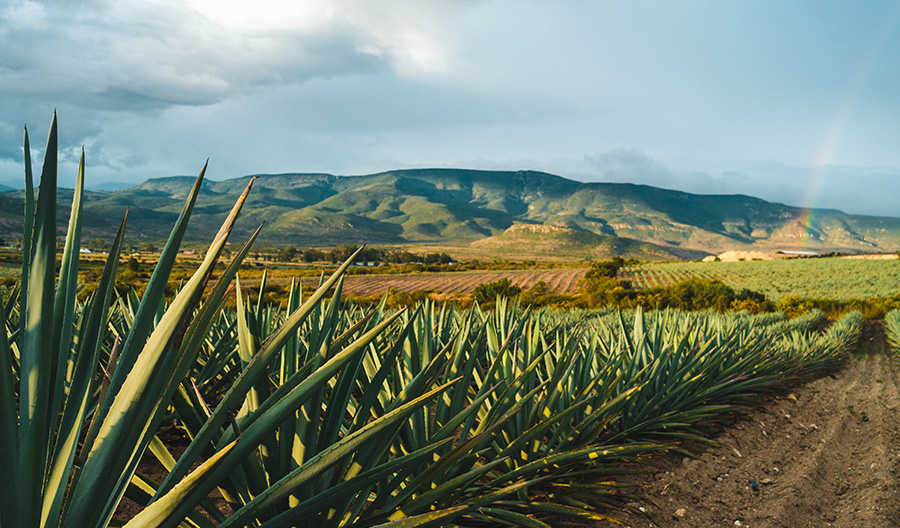You might know mezcal as tequila’s smoky cousin, but the Mexican agave distillate is in fact an ancestor of the world’s most popular agave-based drink—and “smoky” only scratches the surface of a spirit that is as diverse as its country of origin. Like wine, each bottle reflects the unique terroir of the region where it was distilled, not to mention generations of family methods and recipes.
Mezcal is about Mexican culture. In the Mexican state of Oaxaca, where it is largely produced, the spirit is present for all occasions, celebratory or somber: Shots are poured at weddings, and mourners drink a specially made batch from prayer candles to honor deceased family members.
Mezcal consumption in the U.S. continues to grow at an impressive pace. It connects people, connects times, connects generations, and connects traditions.
Unfortunately, mezcal’s rapid growth is arguably not all positive. Many industry experts, worry that the ancestral spirit will go the way of industrialized tequilas, falling victim to mechanized processes like autoclaves, pressure cooker-like machines that cook agave hearts with steam.
The Consejo Regulador del Mezcal (CRM) has regulated mezcal since 1994, experts caution against relying solely on its classification system, which can include barriers to entry for families who have been making mezcal the same way for centuries. As such, many bottles labeled “destilados de agave” employ the practices historically used in mezcal-making, and prominent producers have opted to drop out of the CRM registration process altogether.
Here are the essential things to know about Mexico’s most beloved spirit.
MEZCAL FAST FACTS
Mezcal is made with agave hearts that are roasted in underground pits, imparting the smoky and savory qualities many associate with the spirit.
Most mezcal is made in the Mexican state of Oaxaca.
Mezcal can legally be made with more than 40 varieties of agave.
Spirits called destilados de agave cannot legally be labeled mezcal, but often employ processes that have historically been used in mezcal-making.

How Should You Drink Mezcal?
Mezcal is traditionally sipped neat, on its own. It's recommended to try it that way to best appreciate the time and methods that have gone into the spirit. It is often served in a copita, a small cup for sipping mezcal, alongside an orange slice and sal de gusano, or worm salt.
Bartenders began experimenting with mezcal in cocktails in the early 2000s at agave-focused bars like. Modern classics that emerged from that time period include the Oaxaca Old Fashioned and Mezcal Negroni. Generally speaking, mezcal can be used in place of tequila to bring a smoky, savory quality to cocktails like the Margarita; you may opt to split the base spirit between tequila and mezcal so as not to overpower the drink’s flavors.
If you are using mezcal for cocktails, opt for a mezcal espadín with a lower ABV of 35% to 45% instead of a more artisanal bottle. It also tends to have flavors that integrate better into mixed drinks.
What Does Mezcal Taste Like? Hint: It’s Not Just Smoky
Mezcal is an expression of Mother Earth with the help of agave, but it’s also the historical expression of the families behind these beautiful spirits.
Like tequila and other agave spirits, mezcal shows earthy and vegetal notes from the plant, but from there, expressions can vary widely. And although the process by which mezcal is made imparts some smoky flavors, the level of smokiness differs from bottle to bottle. The smoky flavor profile should be secondary, as skilled mezcaleros will shave the piña after it cooks to ensure no burnt pieces end up in the batch.
The terroir of the region where the agave plant is grown and the methods of the mezcalero will most influence the flavor, which can range from floral to minerally and even cheesy. As an example of terroir’s unique influence, is Mezcal Tosba in the Sierra Norte of Oaxaca, which is grown alongside apples and pineapples, resulting in universally fruity, sweet expressions, whether the agave species used is a tobalá or a tepeztate.
The producer, meanwhile, has released rainy-season expressions to show just how much seasonality can affect a bottle. Other factors that can affect the flavor of mezcal include the use of spring water versus well water in the fermentation stage and the type of pot used to distill the mezcal.

